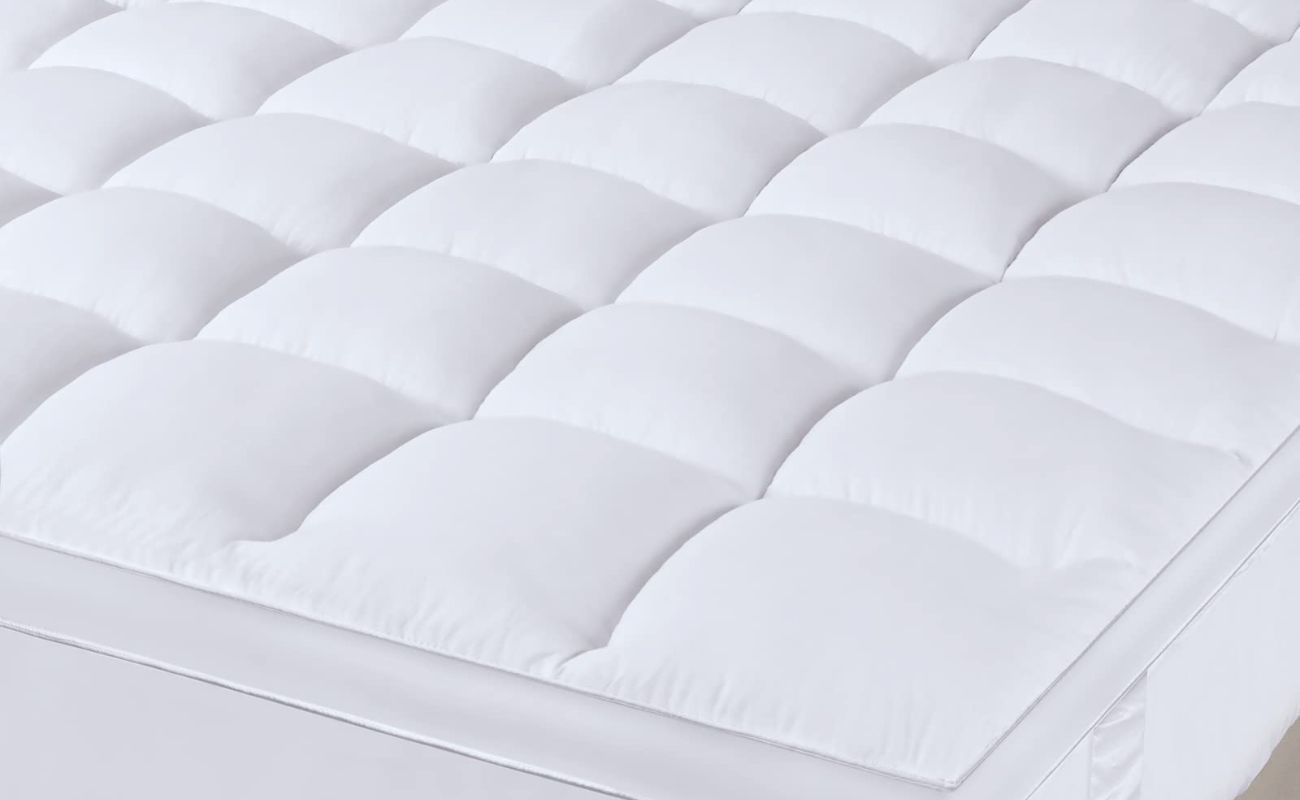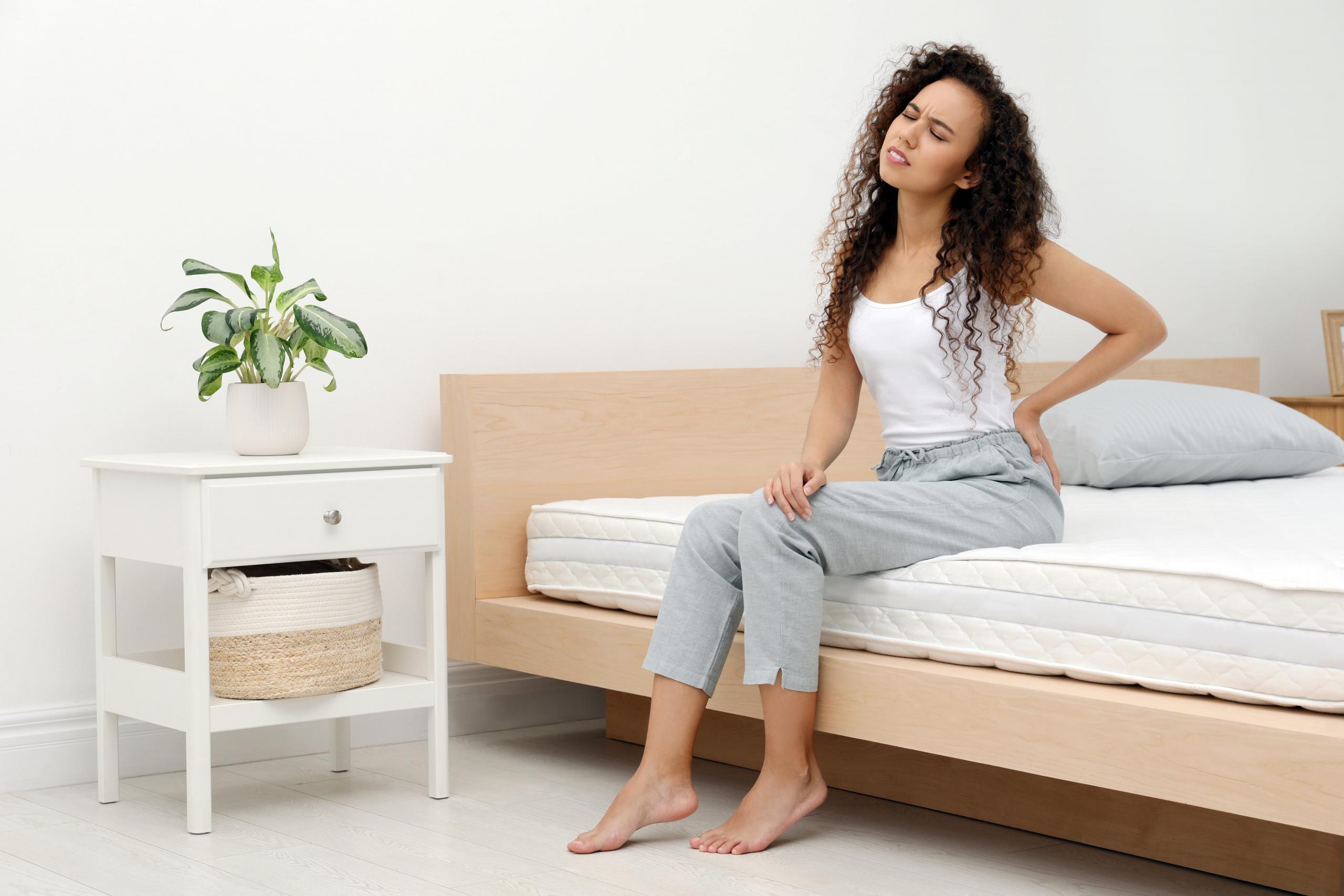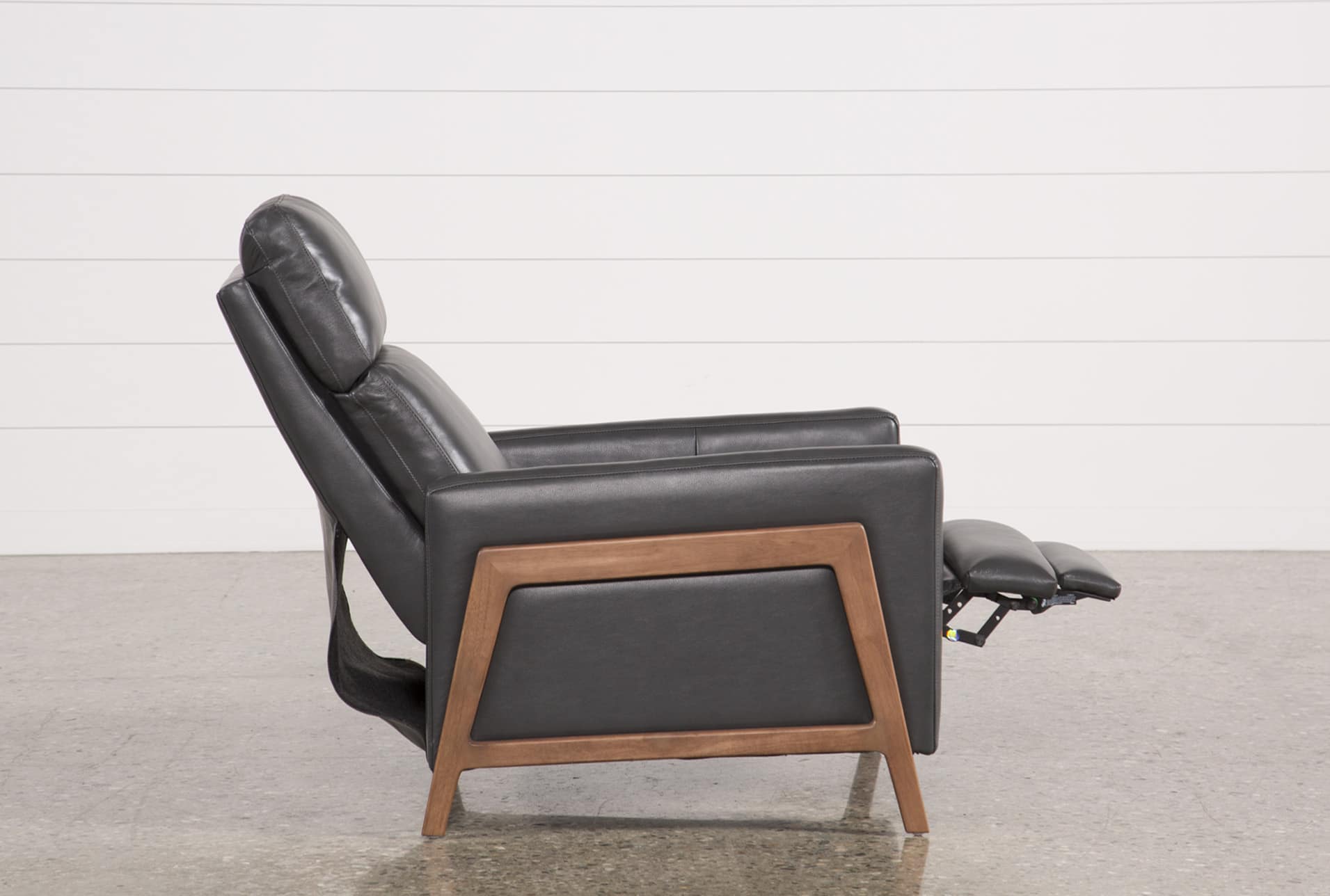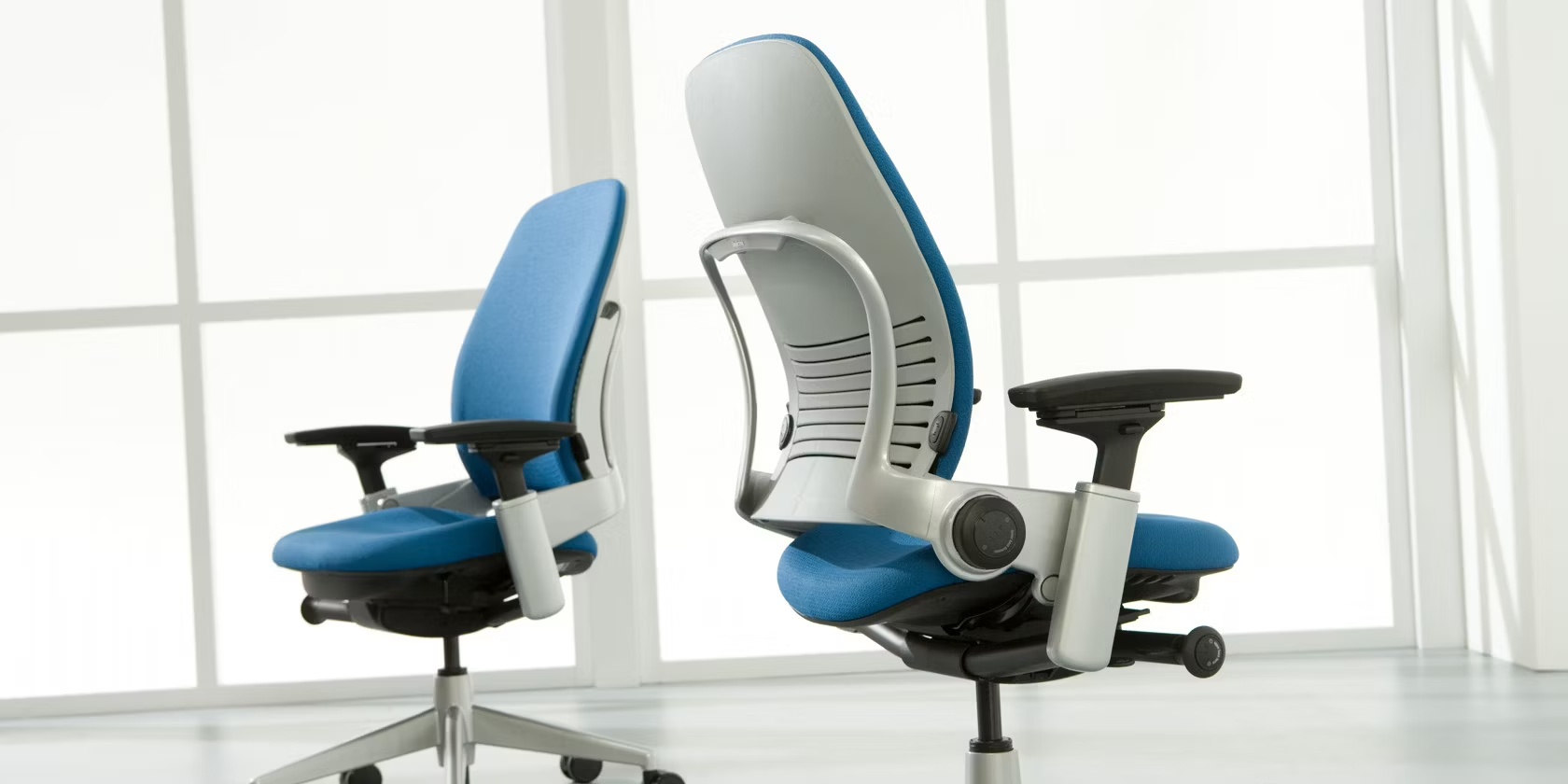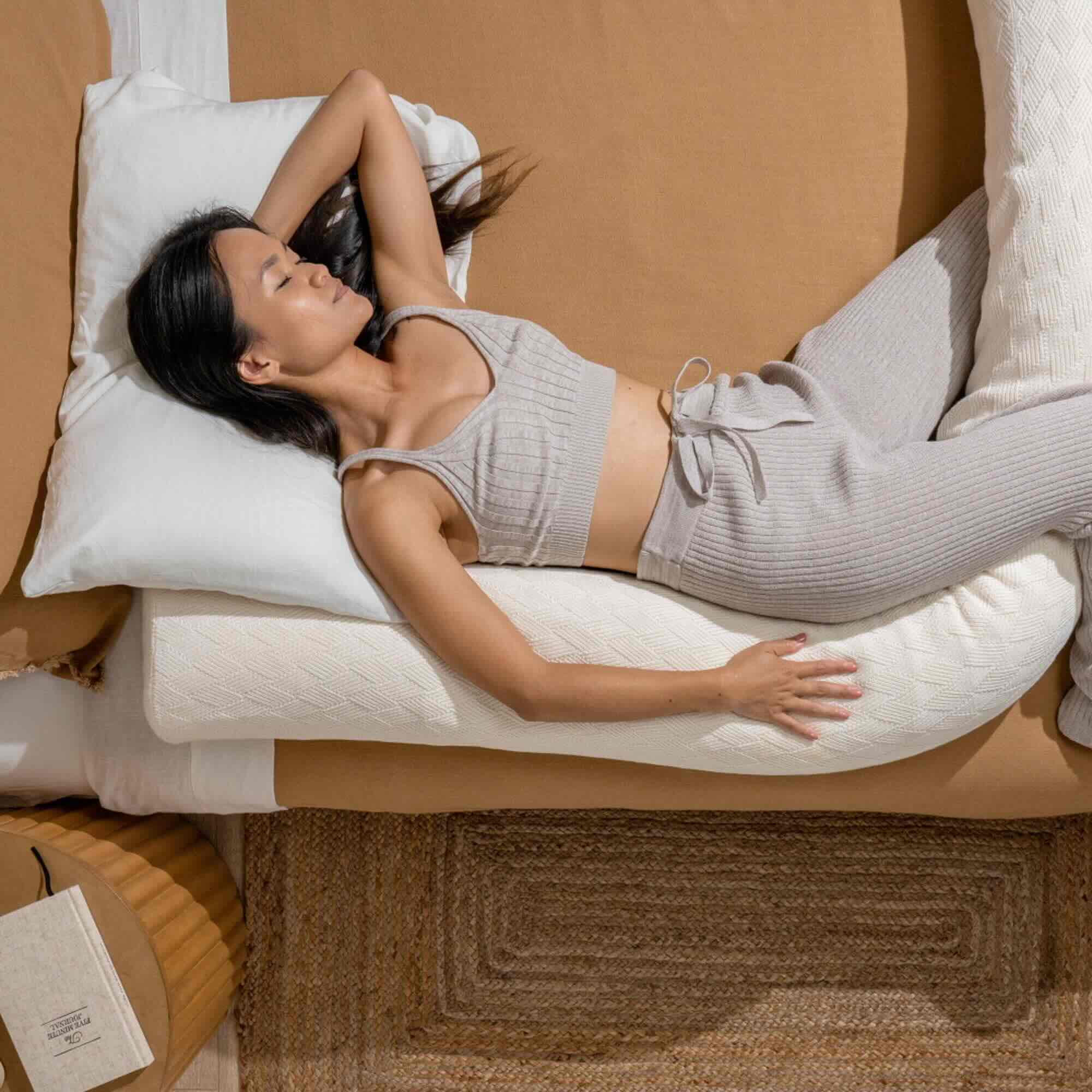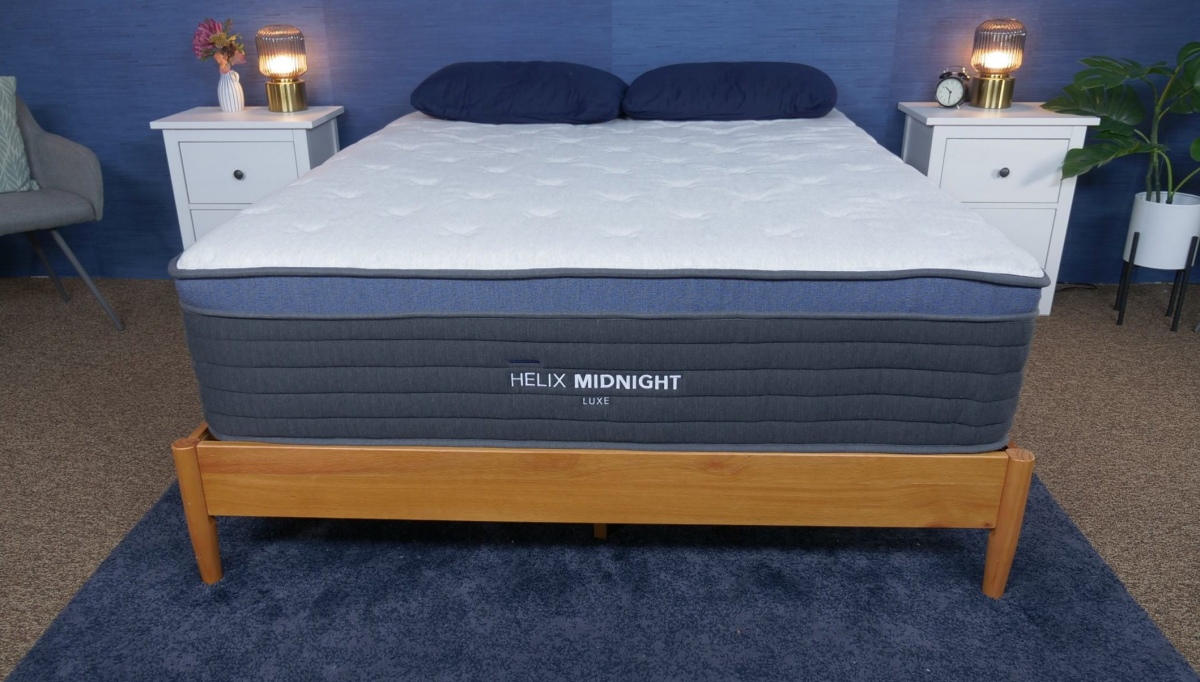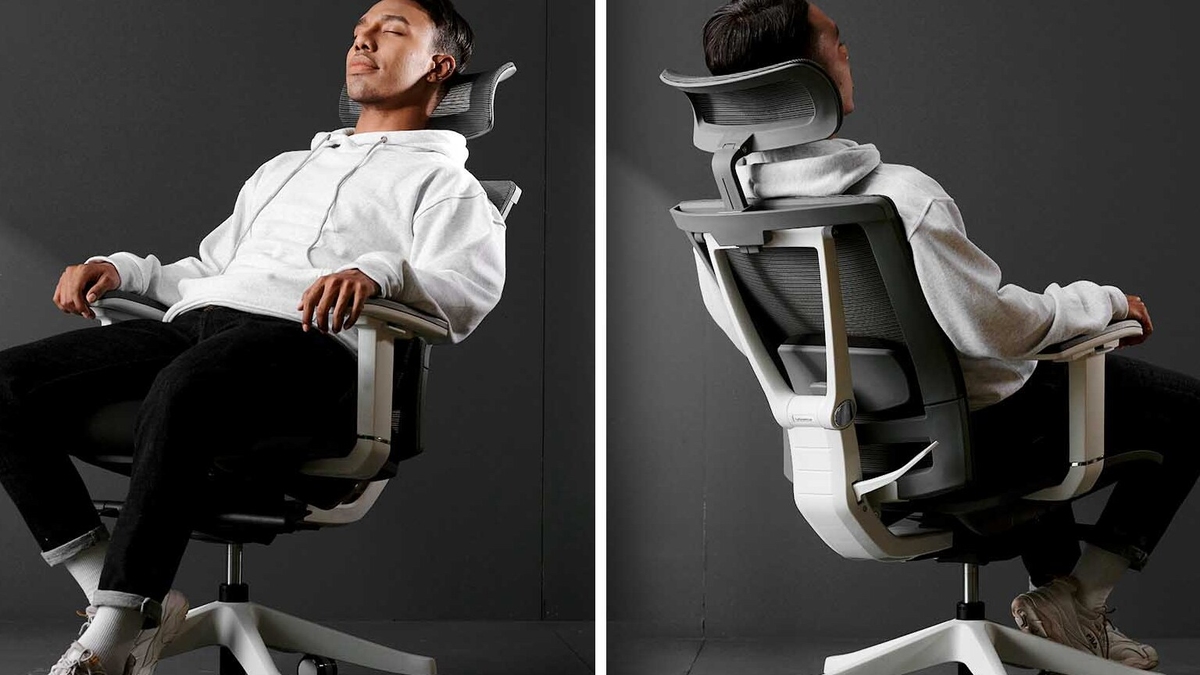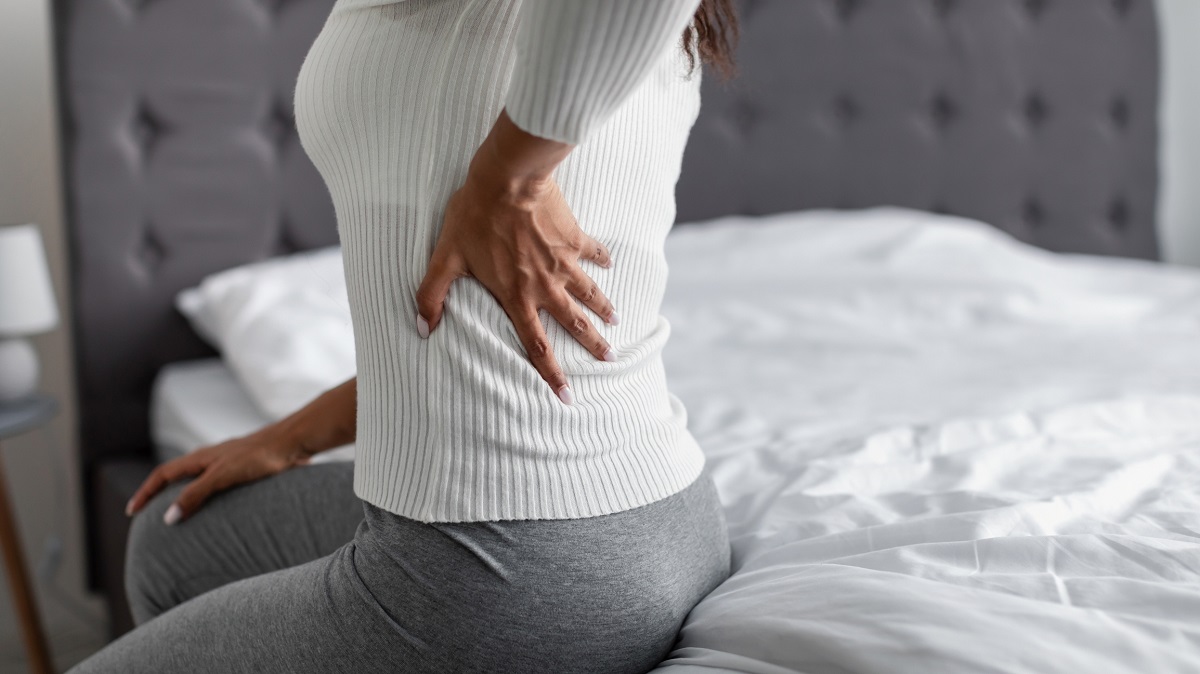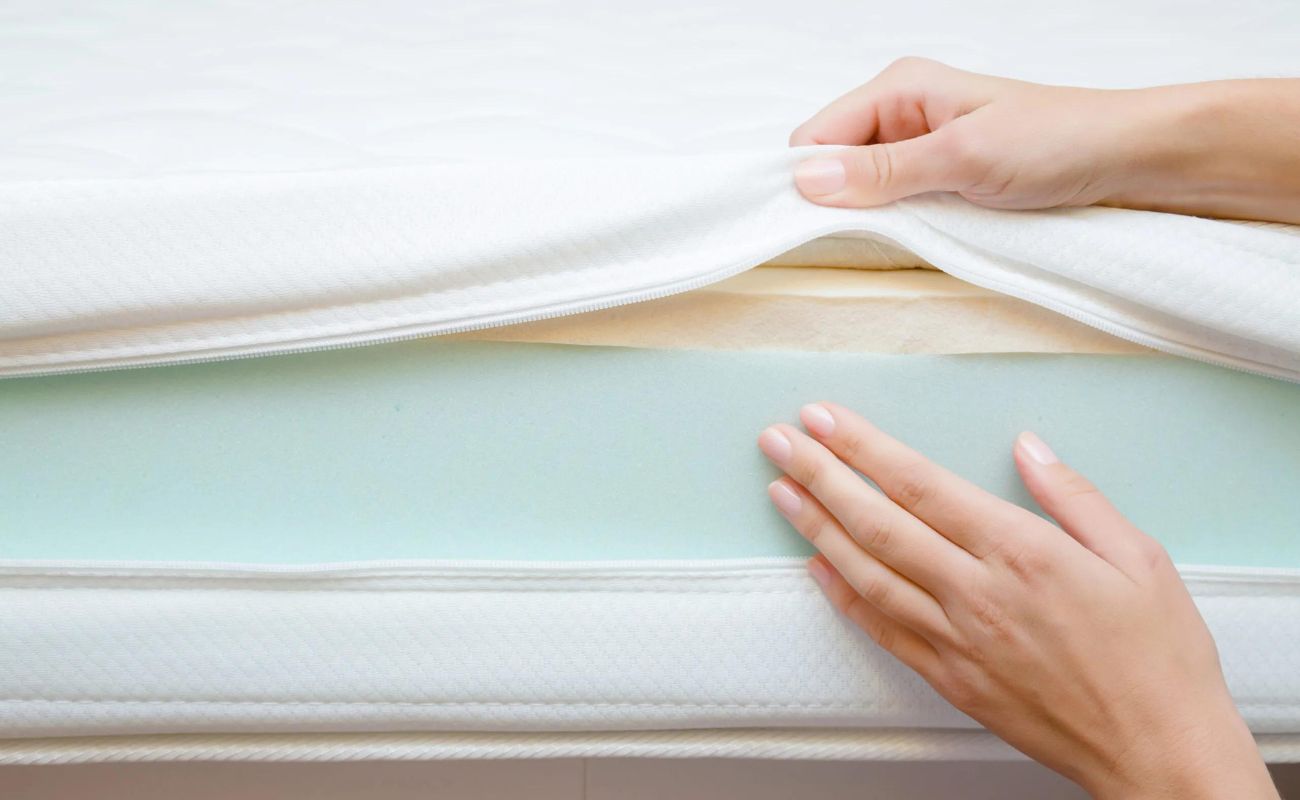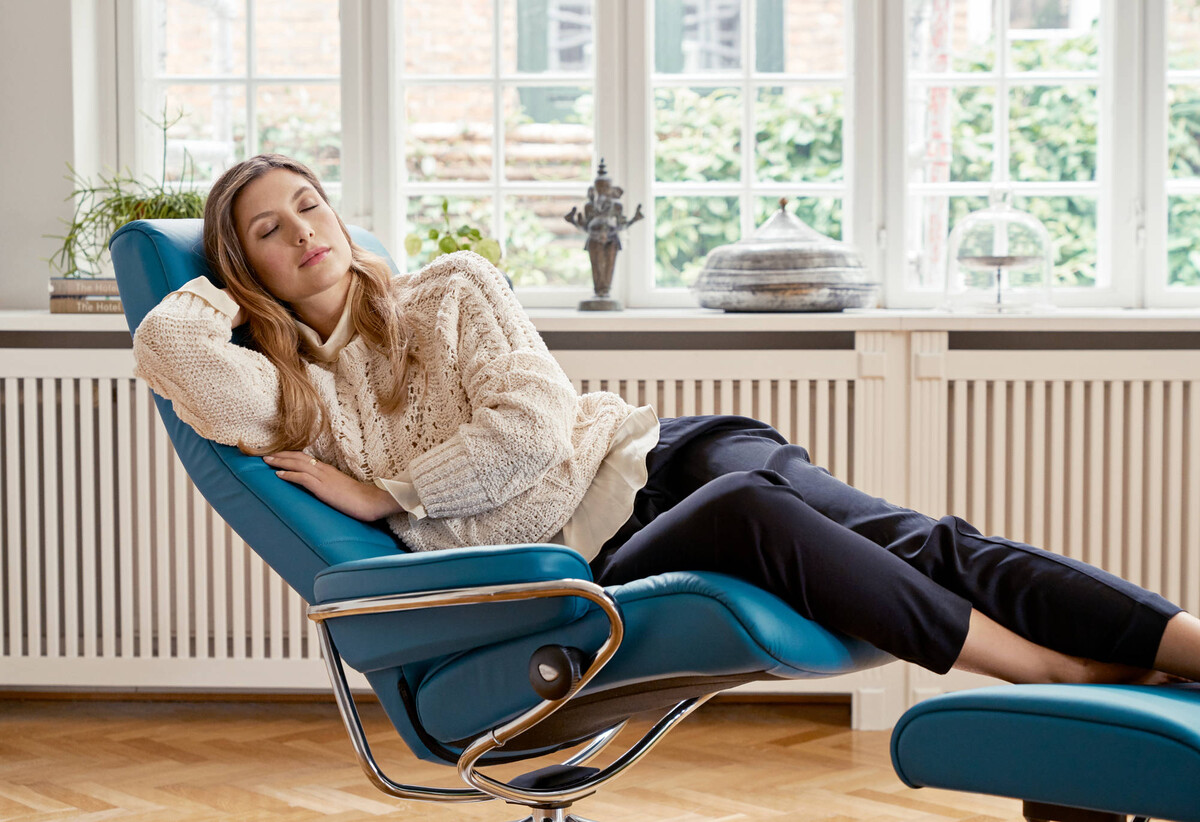Home>Furniture>Bedroom Furniture>What Type Of Mattress Is Good For Back Pain
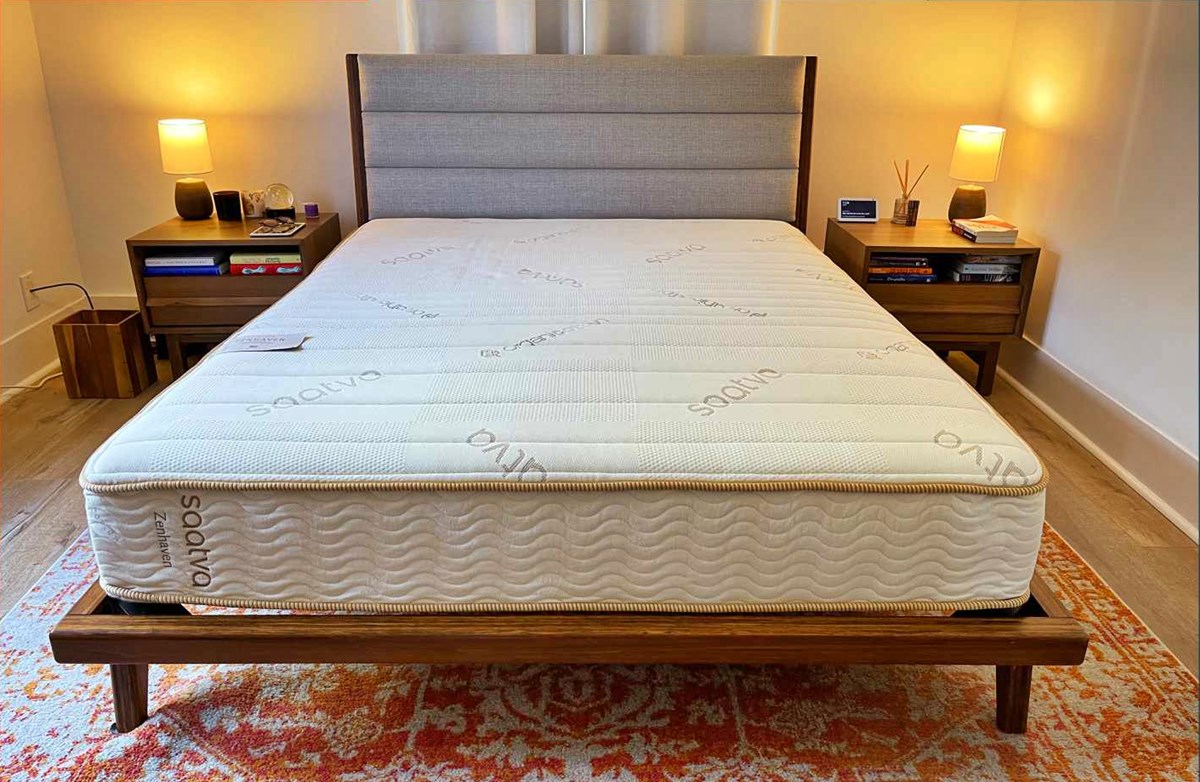

Bedroom Furniture
What Type Of Mattress Is Good For Back Pain
Modified: January 18, 2024
Looking for bedroom furniture that is good for back pain? Discover the perfect mattress for a comfortable and supportive sleep, designed to alleviate back pain.
(Many of the links in this article redirect to a specific reviewed product. Your purchase of these products through affiliate links helps to generate commission for Storables.com, at no extra cost. Learn more)
Introduction
Welcome to our comprehensive guide on choosing the right mattress for back pain. If you suffer from back pain, you know how crucial it is to find a mattress that provides the right balance of support and comfort. A good mattress can contribute to improved sleep quality and help alleviate the discomfort associated with back pain.
Back pain is a common issue that affects millions of people worldwide. It can be caused by various factors such as poor posture, muscle strain, degenerative conditions, or even the wrong mattress. When it comes to managing back pain, one of the most important factors to consider is the type of mattress you sleep on.
In this article, we will delve into the different types of mattresses available and discuss the important factors to consider when choosing the right one for back pain. Whether you prefer an innerspring mattress, memory foam, latex, or a hybrid, we’ve got you covered.
Improper spinal alignment during sleep can exacerbate back pain. Therefore, it’s crucial to find a mattress that provides adequate support to ensure your spine is properly aligned while you sleep. The right mattress can relieve pressure points, promote better blood circulation, and reduce the risk of developing chronic back pain.
Choosing the right mattress can be overwhelming, given the wide variety available on the market. With our expert guidance, you can make an informed decision and find the perfect mattress to suit your specific needs and preferences.
So, let’s dive into the world of mattresses and discover which type is best suited for alleviating back pain and enhancing your overall sleep quality.
Key Takeaways:
- Choosing a medium-firm to firm mattress can provide optimal support and alleviate back pain by maintaining proper spinal alignment and offering pressure relief, promoting restful and rejuvenating sleep.
- Consider personal preferences and sleep position when selecting a mattress for back pain, ensuring that it caters to individual comfort needs and promotes better spinal alignment based on sleep habits and body type.
Read more: What Is A Good Mattress For Back Pain
Understanding Back Pain
Before we delve into the world of mattresses, it’s important to have a basic understanding of back pain. Back pain can range from a mild, nagging discomfort to a debilitating condition that affects your daily activities and quality of life.
Back pain can be categorized into two main types: acute and chronic. Acute back pain is sudden and typically lasts for a short period, usually a few weeks or less. It is often caused by muscle strains, sprains, or injuries. On the other hand, chronic back pain lasts for three months or longer and is often attributed to underlying medical conditions, such as herniated discs, arthritis, or spinal stenosis.
Some common causes of back pain include poor posture, improper lifting techniques, sedentary lifestyle, obesity, age-related degeneration of the spine, and structural abnormalities in the spine. The intensity and frequency of back pain can vary from person to person.
People with back pain often experience stiffness, muscle spasms, shooting or stabbing pain, limited mobility, and difficulty in performing everyday tasks. It can significantly impact their sleep quality, leading to disrupted sleep patterns and increased fatigue.
It is important to note that while a mattress cannot cure back pain, the right choice can provide relief and support for better sleep and overall comfort. A mattress that offers proper spinal alignment, pressure relief, and tailored support can help minimize discomfort and improve your sleep quality.
Now that we have a basic understanding of back pain, let’s explore the different types of mattresses that are beneficial for people dealing with this common condition.
Importance of Choosing the Right Mattress
Choosing the right mattress is crucial, especially if you suffer from back pain. Your mattress plays a significant role in providing support, comfort, and proper spinal alignment while you sleep. Here are some key reasons why selecting the right mattress is important:
1. Spinal Alignment: A good mattress helps maintain the natural alignment of your spine, ensuring that it remains in a neutral position throughout the night. Proper spinal alignment supports the natural curves of your back, relieving pressure on the muscles and joints and reducing the risk of further pain or discomfort.
2. Pressure Relief: Back pain can be exacerbated by pressure points that develop when your body is not properly supported by the mattress. The right mattress should offer targeted pressure relief, particularly in areas like the shoulders, hips, and lower back, to distribute your weight evenly and minimize pressure on specific areas.
3. Support for Muscles and Joints: A supportive mattress helps alleviate stress on your muscles and joints, allowing them to relax and recover during sleep. It promotes better blood circulation, which aids in the delivery of oxygen and essential nutrients to help repair damaged tissues.
4. Enhanced Sleep Quality: Chronic pain disrupts sleep, leading to fatigue and a decreased ability to manage pain. The right mattress can significantly improve your sleep quality by providing a comfortable and supportive surface, allowing you to fall asleep faster and stay asleep longer. Restorative sleep helps rejuvenate your body and reduces the perception of pain.
5. Personalized Comfort: Everyone has different preferences when it comes to mattress firmness and feel. The right mattress should cater to your personal comfort needs, whether you prefer a firmer or softer surface. It should also accommodate different sleep positions, providing adequate support for your spine and aligning it in a way that minimizes strain on your back muscles.
6. Longevity and Durability: Investing in a quality mattress designed for back pain ensures that it will last for years. Quality materials and construction offer better durability, meaning you won’t have to replace your mattress frequently. A durable mattress maintains its integrity, providing consistent support and comfort for a longer time.
Choosing the right mattress for back pain can make a significant difference in your overall well-being, allowing you to wake up feeling refreshed, pain-free, and ready to take on the day. Now that you understand the importance of selecting the right mattress, let’s explore the different types of mattresses suitable for back pain relief.
Types of Mattresses for Back Pain
When it comes to choosing a mattress for back pain, there are several options available. Each type of mattress provides unique qualities that cater to different sleep preferences and conditions. Let’s explore the most popular types of mattresses:
- Innerspring Mattresses: Innerspring mattresses are constructed with a support core made up of metal coils or springs. These mattresses offer a traditional and bouncy feel, with varying levels of firmness and support. For individuals with back pain, an innerspring mattress with a thicker gauge or coil count can offer better support. The coils also provide good airflow, which helps regulate body temperature.
- Memory Foam Mattresses: Memory foam mattresses are made from viscoelastic foam, which conforms to the body’s shape and provides excellent pressure relief. They offer contouring comfort, reducing the impact on pressure points. Memory foam mattresses also absorb motion, making them a suitable choice for couples. Ensure to choose a medium-firm to firm memory foam mattress to maintain proper spinal alignment.
- Latex Mattresses: Latex mattresses are known for their responsiveness, support, and durability. They are constructed with latex foam derived from the sap of rubber trees. Latex offers a buoyant and resilient feel, providing excellent support for back pain sufferers. These mattresses have natural breathability and cooling properties, making them suitable for those who tend to sleep hot.
- Hybrid Mattresses: Hybrid mattresses combine the support of innerspring coils with the pressure-relieving benefits of memory foam or latex. These mattresses often have a supportive coil base layer with added comfort layers on top. Hybrid mattresses provide a good balance of support, pressure relief, and motion isolation, making them an ideal choice for individuals with back pain.
Each type of mattress has its own advantages, and the best one for you depends on your personal preferences, body type, and specific back pain needs. Some individuals may find relief with the conforming feel of memory foam, while others may prefer the bounciness of innerspring or the support of latex.
When choosing a mattress for back pain, consider factors such as firmness level, support and alignment, pressure relief, durability, and your individual sleep position preferences. Now, let’s dive deeper into these factors to help you make an informed decision.
Innerspring Mattresses
Innerspring mattresses are one of the most common and traditional mattress types available. They are constructed with a support core made up of metal coils or springs. These coils provide support and contribute to the overall feel and durability of the mattress. Innerspring mattresses offer a wide range of firmness options, allowing you to find the right level of support for your back pain needs.
For individuals with back pain, an innerspring mattress can be a suitable choice due to its supportive nature. The coil system helps maintain proper spinal alignment by providing a firm and sturdy surface to sleep on. The level of support can vary depending on factors such as the thickness and gauge of the coils.
Another advantage of innerspring mattresses is their excellent airflow. The open structure of the coils allows for better ventilation, promoting breathability and temperature regulation. This can be particularly beneficial for those who tend to sleep hot.
However, it’s important to note that innerspring mattresses may not provide as much pressure relief as other mattress types. The bouncy nature of the coils may not conform closely to the body, which can be a disadvantage for individuals with specific pressure points or joint pain. If pressure relief is a top priority for your back pain, you may want to consider other mattress options.
When shopping for an innerspring mattress, consider the following factors:
- Coil Count: Higher coil counts usually indicate better support and less motion transfer. Look for mattresses with a higher coil count to ensure optimal support for your back.
- Coil Gauge: The gauge refers to the thickness of the coils. Thicker coils tend to be firmer and provide more support. Consider your weight and comfort preferences when choosing the appropriate gauge.
- Pillow Top: Some innerspring mattresses come with a pillow top layer for added cushioning and comfort. This can be a great option for individuals who prefer a softer sleeping surface.
- Edge Support: Strong edge support is essential for individuals who require additional support for getting in and out of bed or those who tend to sleep near the edge. Look for reinforced perimeter edges in the mattress design.
Innerspring mattresses can be a suitable option for back pain if you prefer a more traditional feel with a good balance of support and firmness. Consider your personal preferences, sleeping position, and the specific needs of your back pain when choosing the right innerspring mattress for you.
Read more: What Is The Best Mattress For Bad Back Pain
Memory Foam Mattresses
Memory foam mattresses have gained popularity in recent years due to their exceptional comfort and pressure-relieving properties. These mattresses are made from viscoelastic foam, which responds to heat and pressure by contouring to the shape of your body. This contouring effect helps distribute your body weight evenly and alleviate pressure points, making memory foam mattresses an excellent choice for individuals with back pain.
One of the key benefits of memory foam mattresses is their ability to provide tailored support and promote proper spinal alignment. The foam conforms closely to your body, allowing your spine to maintain its natural curves while you sleep. This can help relieve strain on the back muscles and reduce the risk of developing or exacerbating back pain.
Additionally, memory foam mattresses excel at motion isolation. The foam absorbs and isolates motion, meaning you won’t feel your partner’s movements during the night. This can be advantageous for individuals who are easily disturbed by movement, allowing for undisturbed sleep.
When shopping for a memory foam mattress for back pain relief, consider the following factors:
- Firmness Level: Memory foam mattresses come in a range of firmness options, from plush to firm. The ideal firmness level for back pain varies depending on personal preferences and sleep position. Medium-firm to firm mattresses generally provide better support for individuals with back pain.
- Density: Higher-density foam tends to provide more support and durability. Look for mattresses with a density of at least 4-5 lbs per cubic foot for optimal support and longevity.
- Cooling Features: Traditional memory foam mattresses tend to retain heat, which can be a concern for some individuals. Look for memory foam mattresses with cooling features like gel infusions or open-cell foam that promote airflow and regulate temperature.
- Thickness: Consider the thickness of the memory foam layer in the mattress. Thicker foam layers often provide better pressure relief and contouring support.
Memory foam mattresses are a popular choice for individuals with back pain due to their ability to conform to the body, relieve pressure points, and offer excellent support. If you prefer a mattress that offers a “hugging” sensation and provides customized comfort, a memory foam mattress may be the right choice for you.
Latex Mattresses
Latex mattresses are known for their natural comfort, resilience, and durability. These mattresses are constructed using latex foam derived from the sap of rubber trees. Latex foam provides a unique combination of support and pressure relief, making it an excellent choice for individuals with back pain.
One of the key advantages of latex mattresses is their responsive and buoyant nature. Latex foam immediately responds to your movements, adjusting and contouring to the shape of your body. This allows for excellent support and proper spinal alignment, helping to alleviate back pain. The natural elasticity of latex foam promotes healthy weight distribution, reducing pressure on specific areas of the body.
Latex mattresses offer a balance of comfort and support that can benefit individuals with various types of back pain. They provide a supportive yet soft surface that adapts to your body’s curves while still maintaining a sturdy foundation. This can help reduce the risk of developing pressure points and minimize discomfort during sleep.
In addition to their supportive qualities, latex mattresses are also naturally hypoallergenic and resistant to dust mites and mold. This makes them a great choice for individuals with allergies or asthma, ensuring a cleaner and healthier sleep environment.
When shopping for a latex mattress, consider the following factors:
- Natural vs. Synthetic Latex: Latex mattresses are available in both natural and synthetic forms. Natural latex mattresses are made entirely from organic latex foam, while synthetic latex mattresses are made from a blend of synthetic materials. Natural latex is often preferred for its superior quality, eco-friendliness, and breathability.
- Firmness Options: Latex mattresses come in a range of firmness levels, from soft to firm. The ideal firmness level depends on your personal preferences and the specific needs of your back pain. Medium to medium-firm mattresses are typically recommended for optimal support.
- Design and Construction: Consider the design and construction of the latex mattress. Some mattresses have a solid latex core, while others feature a combination of latex layers for enhanced support and comfort. Look for mattresses with good ventilation, as latex naturally provides breathability to keep you cool during sleep.
Latex mattresses offer a durable and supportive option for individuals with back pain. Their natural resilience and contouring properties can help alleviate pain and promote better sleep quality. If you prefer a mattress that combines support, pressure relief, and a naturally cool sleep surface, exploring latex mattresses may be worth considering.
Hybrid Mattresses
Hybrid mattresses are a popular choice for individuals seeking the best of both worlds – the support of innerspring coils and the pressure-relieving comfort of foam or latex. These mattresses combine different materials to create a unique sleep surface that caters to a wide range of sleep preferences, including those with back pain.
Hybrid mattresses typically consist of a pocketed coil support system combined with comfort layers made of memory foam, latex, or other materials. The coil system provides excellent support, stability, and durability, while the comfort layers offer contouring and pressure relief for the body.
One of the primary advantages of hybrid mattresses is their ability to provide targeted support and pressure relief. The combination of coils and foam or latex allows for optimal spinal alignment and the reduction of pressure points. This can be particularly beneficial for individuals with back pain, as it helps alleviate discomfort and promote a more restful sleep.
Additionally, hybrid mattresses offer excellent motion isolation. The foam or latex layers help absorb and minimize motion transfer, ensuring that any movement from your partner doesn’t disturb your sleep. This can be advantageous for couples with different sleep patterns or preferences.
When shopping for a hybrid mattress, consider the following factors:
- Coil Type and Count: Look for mattresses with high-quality pocketed coils that provide individualized support and minimize motion transfer. The coil count can also affect the level of support, with higher coil counts generally offering better support.
- Comfort Layers: Consider the materials used in the comfort layers, such as memory foam or latex. Each material has its own unique feel and benefits. Choose a hybrid mattress with comfort layers that suit your preferences for pressure relief and comfort.
- Firmness Level: Hybrid mattresses come in a range of firmness options. Consider your personal preferences, body type, and the needs of your back pain when selecting the appropriate firmness level.
- Edge Support: Strong edge support can be important for individuals who require additional stability when getting in and out of bed. Look for hybrid mattresses with reinforced edges for better edge support.
Hybrid mattresses offer a versatile and comfortable choice for individuals with back pain. They combine the support of coils with the pressure relief of foam or latex, providing an ideal balance for a restful and pain-free sleep. If you’re looking for a mattress that offers the benefits of multiple materials, consider exploring hybrid mattress options.
A medium-firm memory foam or hybrid mattress is often recommended for back pain, as it provides both support and pressure relief. Be sure to also consider your sleeping position and personal preferences when choosing a mattress.
Factors to Consider When Choosing a Mattress for Back Pain
When selecting a mattress for back pain, it’s important to consider several factors to ensure that you find the right one for your specific needs. Here are some key factors to keep in mind:
- Firmness Level: The firmness of a mattress plays a crucial role in providing the proper support for your back. While personal preferences may vary, generally, a medium-firm to firm mattress is recommended for individuals with back pain. A mattress that is too soft may not provide adequate support, while a mattress that is too firm can create excessive pressure on certain areas of the body.
- Support and Alignment: A good mattress should promote proper spinal alignment, ensuring that your spine remains in a neutral position throughout the night. The mattress should support the natural curvature of your spine, providing adequate support to the back muscles and joints. Look for a mattress that offers even support from head to toe and maintains the alignment of your spine in your preferred sleep position.
- Pressure Relief: Pressure relief is crucial for individuals with back pain. A mattress that effectively distributes your body weight and alleviates pressure points can help reduce discomfort and prevent the development of new pain. Look for mattresses with comfort layers made of memory foam or latex, as they often provide excellent pressure relief and contouring support.
- Durability and Material Quality: Investing in a high-quality mattress that is built to last is essential. Look for mattresses made with durable materials and excellent craftsmanship. Consider factors such as the quality of the coils (if applicable), the density of foam layers, and the overall construction of the mattress. A durable mattress will maintain its supportive properties and provide long-term comfort and pain relief.
- Personal Preferences and Sleep Position: Your personal preferences and sleep position also play a role in choosing the right mattress. Some individuals prefer a softer feel, while others prefer a firmer surface. Additionally, different sleep positions may require different levels of support and pressure relief. Consider your comfort preferences and ensure that the mattress is suitable for your preferred sleep position, whether you sleep on your back, side, or stomach.
Keep in mind that there is no one-size-fits-all solution when it comes to choosing a mattress for back pain. Each individual has unique needs and preferences. It’s important to test out different mattresses and spend enough time to determine which one provides the optimal combination of support, comfort, and pain relief for your specific condition.
By considering these factors and taking the time to select the right mattress, you can significantly improve your sleep quality, alleviate back pain, and wake up feeling refreshed and revitalized each morning.
Firmness Level
When choosing a mattress for back pain, one of the key factors to consider is the firmness level. The firmness of a mattress can greatly impact the level of support and comfort it provides for your back.
It’s important to note that firmness is subjective and can vary from person to person. What might be comfortable and supportive for one individual may not be the same for another. However, there are some general guidelines to keep in mind when it comes to firmness and back pain.
A mattress that is too soft may not provide adequate support for your spine. When you sink too far into a mattress, it can lead to misalignment and increased pressure on certain areas of the body. This can worsen back pain and contribute to discomfort during sleep. Therefore, it is generally recommended to avoid mattresses that are overly plush or lack sufficient support.
On the other hand, a mattress that is too firm can also be problematic for individuals with back pain. While a firm mattress may offer initial support, it can create uncomfortable pressure points, especially around the hips, shoulders, and lower back. This can result in poor circulation and added strain on the back muscles, leading to increased pain and discomfort.
For most individuals with back pain, a medium-firm to firm mattress is often the best choice. A medium-firm mattress strikes a balance between support and comfort, providing adequate spinal alignment while still offering some cushioning for pressure relief. This firmness level allows for proper distribution of body weight, reducing the risk of developing new pain or exacerbating existing discomfort.
Ultimately, the firmness level that works best for you will depend on your personal preferences and the specific needs of your back pain. Some individuals may find more relief with a slightly softer mattress, while others may thrive on a firmer surface. It’s important to test different firmness options and consider how your body feels in different sleep positions.
Keep in mind that reputable mattress brands often offer a trial period, allowing you to test the mattress in the comfort of your own home. If possible, take advantage of this trial period to ensure that the chosen firmness level provides the right balance of support and comfort.
Remember that your comfort is paramount when selecting a firmness level. Additionally, factors such as body weight, sleep position, and personal preferences play a role in determining the ideal firmness for your back pain. By finding the right balance of support and comfort, you can help alleviate back pain and improve the quality of your sleep.
Support and Alignment
Support and alignment are crucial factors to consider when choosing a mattress for back pain. Proper support and alignment help maintain the natural curvature of your spine, relieve pressure on the muscles and joints, and minimize the risk of developing or worsening back pain.
A mattress that provides adequate support ensures that your body weight is evenly distributed, preventing specific areas from bearing excessive pressure. When your body is properly supported, your spine remains aligned in a neutral position, allowing the muscles and ligaments to relax and rejuvenate during sleep.
One important aspect of support is the mattress’s ability to accommodate the natural curves of your back. Your spine has natural curves, including the cervical (neck), thoracic (upper back), lumbar (lower back), and sacral (tailbone) curves. For optimal support, a mattress should contour to these curves without sagging or causing misalignment.
In terms of alignment, it’s important to consider how the mattress supports your preferred sleeping position. Different sleep positions require different levels of support to maintain spinal alignment:
- Back Sleepers: Back sleepers generally benefit from a mattress that provides even support, particularly in the lumbar area. The mattress should contour to the natural curve of the lower back, preventing it from sinking too deeply into the mattress.
- Side Sleepers: Side sleepers need a mattress that offers support for the hips and shoulders, as these areas can experience the most pressure. A mattress with enough cushioning to relieve pressure points is ideal for side sleepers.
- Stomach Sleepers: Stomach sleepers require a supportive mattress that keeps the hips from sinking too deeply, which can cause misalignment and strain on the spine. A firm to medium-firm mattress is generally recommended for stomach sleepers.
When testing a mattress for support and alignment, pay attention to the following factors:
- Spinal Alignment: Lie on the mattress in your preferred sleeping position and assess whether your spine remains aligned in a natural and neutral position. The mattress should provide even support along the length of your spine.
- Firmness: As mentioned earlier, a medium-firm to firm mattress often provides better support for individuals with back pain. However, the primary focus should be on how well the mattress supports your body and aligns your spine, rather than relying solely on the firmness level.
- Edge Support: Consider the mattress’s edge support, especially if you tend to sit or sleep near the edge. A mattress with strong edge support will ensure that you feel secure and stable when getting in and out of bed.
Remember that a mattress’s support and alignment properties are just as important as its firmness level. By choosing a mattress that effectively supports and aligns your spine, you can help alleviate back pain and enjoy restful and rejuvenating sleep.
Pressure Relief
Pressure relief is a crucial factor to consider when selecting a mattress for back pain. A mattress that provides effective pressure relief can help alleviate discomfort and prevent the development of pressure points, which can contribute to increased back pain.
Pressure points occur when certain areas of your body, such as your hips, shoulders, and lower back, bear excessive pressure due to an uneven distribution of body weight. When pressure points are not properly addressed, they can cause pain, stiffness, and discomfort, especially for individuals with back pain.
To ensure optimal pressure relief, look for a mattress that offers contouring and cushioning support. This is particularly important for side sleepers, as they typically experience more pressure on their hips and shoulders. A mattress with enough cushioning can alleviate pressure in these areas and promote better spinal alignment.
Memory foam and latex mattresses are often recommended for their excellent pressure-relieving properties. These materials conform to your body, evenly distributing your weight and reducing the impact on pressure points. Memory foam, in particular, has the ability to adapt to your body’s shape and contour, providing targeted support and pressure relief.
When testing a mattress for pressure relief, consider the following:
- Conforming Comfort: Lie on the mattress and assess how well it conforms to your body’s contours. Look for consistent support and the ability to alleviate pressure points, particularly in areas where you experience the most discomfort.
- Material Quality: Ensure that the mattress’s comfort layers are made of high-quality materials that provide adequate cushioning and pressure relief. Look for memory foam or latex mattresses with the right density and responsiveness to offer optimal support and pressure relief.
- Personal Preferences: Pressure relief is subjective, and what works for one person may not work for another. Consider your personal preferences and comfort needs. Some individuals may prefer a more plush feel, while others may prefer firmer support with slight contouring.
Remember that effective pressure relief can help reduce discomfort and allow for better sleep quality, especially for individuals with back pain. By choosing a mattress that provides targeted support and cushioning, you can alleviate pressure points and wake up feeling refreshed and rejuvenated.
Durability and Material Quality
When selecting a mattress for back pain, it’s important to consider the durability and material quality of the mattress. A durable mattress not only ensures long-term comfort and support but also provides value for your investment.
The material quality of a mattress directly impacts its durability and overall performance. Here are some key factors to consider:
- Coil Construction: If you are considering an innerspring mattress, pay attention to the quality and construction of the coils. High-quality coils, such as individually pocketed coils, are more durable and provide better support and motion isolation.
- Foam Density: For memory foam and latex mattresses, foam density is a crucial factor. Higher foam density indicates better durability and support. Look for mattresses with foam density appropriate for your body weight and sleep needs.
- Material Certification: Consider mattresses that are certified for their material quality. Certifications such as CertiPUR-US for foam or eco-friendly certifications for natural materials indicate that the mattress meets certain standards for performance, durability, and environmental impact.
- Reputation and Reviews: Research the brand and read customer reviews to assess the overall reputation and satisfaction level with regards to durability. Reputable brands often provide better-quality materials and construction, leading to longer-lasting mattresses.
A durable mattress maintains its integrity over time, providing consistent support and comfort for an extended period. A high-quality mattress also ensures that the materials used in its construction do not break down or deteriorate prematurely, preventing sagging or loss of support.
Investing in a durable mattress is particularly important for individuals with back pain, as it ensures that the mattress will continue to provide the necessary support and alignment to alleviate discomfort. A mattress with poor durability may lose its supportive properties quickly, leading to increased pain and the need for premature replacement.
When considering the durability and material quality of a mattress, it’s also important to evaluate the warranty offered by the manufacturer. A comprehensive warranty is an indicator of the manufacturer’s confidence in their product’s quality and durability. Make sure to read and understand the warranty terms and coverage.
By choosing a mattress with excellent durability and material quality, you can have peace of mind knowing that your investment will provide long-term comfort, support, and relief for your back pain.
Personal Preferences and Sleep Position
When selecting a mattress for back pain, it’s important to consider your personal preferences and sleep position. Your preferences and sleep habits play a significant role in determining the ideal mattress that will provide optimal comfort and support for your back.
Here are some key factors to consider:
- Comfort Preference: Every individual has their unique comfort preferences. Some prefer a softer mattress that allows them to sink in slightly, while others prefer a firmer surface for a feeling of support. Consider your personal preference and find a mattress that aligns with your desired level of comfort.
- Sleeping Position: The position you prefer to sleep in should also influence your mattress choice. Different sleep positions place different demands on your body and require varying levels of support.
Here’s a guide to help you choose the right mattress based on your sleeping position:
- Back Sleepers: Back sleepers generally benefit from a mattress that provides even support. Look for a mattress that cradles the natural curves of your spine, particularly in the lumbar region. A medium-firm mattress is usually a good choice for back sleepers, as it offers a balance of support and cushioning.
- Side Sleepers: Side sleepers need extra cushioning and support in areas such as the shoulders and hips, as these areas can experience more pressure. Look for a mattress that offers adequate contouring to relieve pressure points. A slightly softer mattress can be beneficial for side sleepers to accommodate the natural alignment of the spine.
- Stomach Sleepers: Stomach sleepers typically require a firmer mattress to prevent their hips from sinking too deeply, which can strain the lower back. Look for a medium-firm to firm mattress that provides sufficient support for proper spinal alignment and reduces the risk of back pain.
Consider your personal preferences, comfort needs, and sleep position when choosing a mattress for back pain. Keep in mind that finding the right balance between support and comfort is essential in alleviating pain and promoting restful sleep.
Additionally, factors such as body weight, overall health conditions, and any specific issues related to your back pain should also be taken into consideration. Take the time to test different mattresses and seek out ones that cater to your specific sleep preferences and needs.
Ultimately, selecting a mattress that aligns with your personal preferences and sleep position will enhance your overall comfort, promote better spinal alignment, and reduce the risk of developing or exacerbating back pain.
Conclusion
Choosing the right mattress for back pain is crucial for ensuring a restful and pain-free sleep. By considering factors such as firmness level, support and alignment, pressure relief, durability and material quality, and personal preferences and sleep position, you can make an informed decision that addresses your specific back pain needs.
Remember, there is no one-size-fits-all solution when it comes to mattress selection. What works for one person may not work for another. It’s important to test out different mattresses and spend enough time to determine which one provides the optimal combination of support, comfort, and pain relief for your back pain.
Whether you choose an innerspring mattress for its traditional support, a memory foam mattress for its excellent pressure relief, a latex mattress for its resilience and natural comfort, or a hybrid mattress for the best of both worlds, it’s essential to prioritize your individual needs and preferences.
Investing in a high-quality mattress that supports proper spinal alignment, offers pressure relief, and caters to your personal comfort preferences can make a world of difference in managing your back pain and improving your overall sleep quality.
Finally, don’t forget to consider other factors that contribute to a healthy sleep environment, such as a supportive pillow, proper sleep hygiene, and regular exercise to strengthen your back muscles and maintain good posture.
With the right mattress and a holistic approach to back pain management, you can wake up each day feeling refreshed, rejuvenated, and ready to take on the world.
Frequently Asked Questions about What Type Of Mattress Is Good For Back Pain
Was this page helpful?
At Storables.com, we guarantee accurate and reliable information. Our content, validated by Expert Board Contributors, is crafted following stringent Editorial Policies. We're committed to providing you with well-researched, expert-backed insights for all your informational needs.
